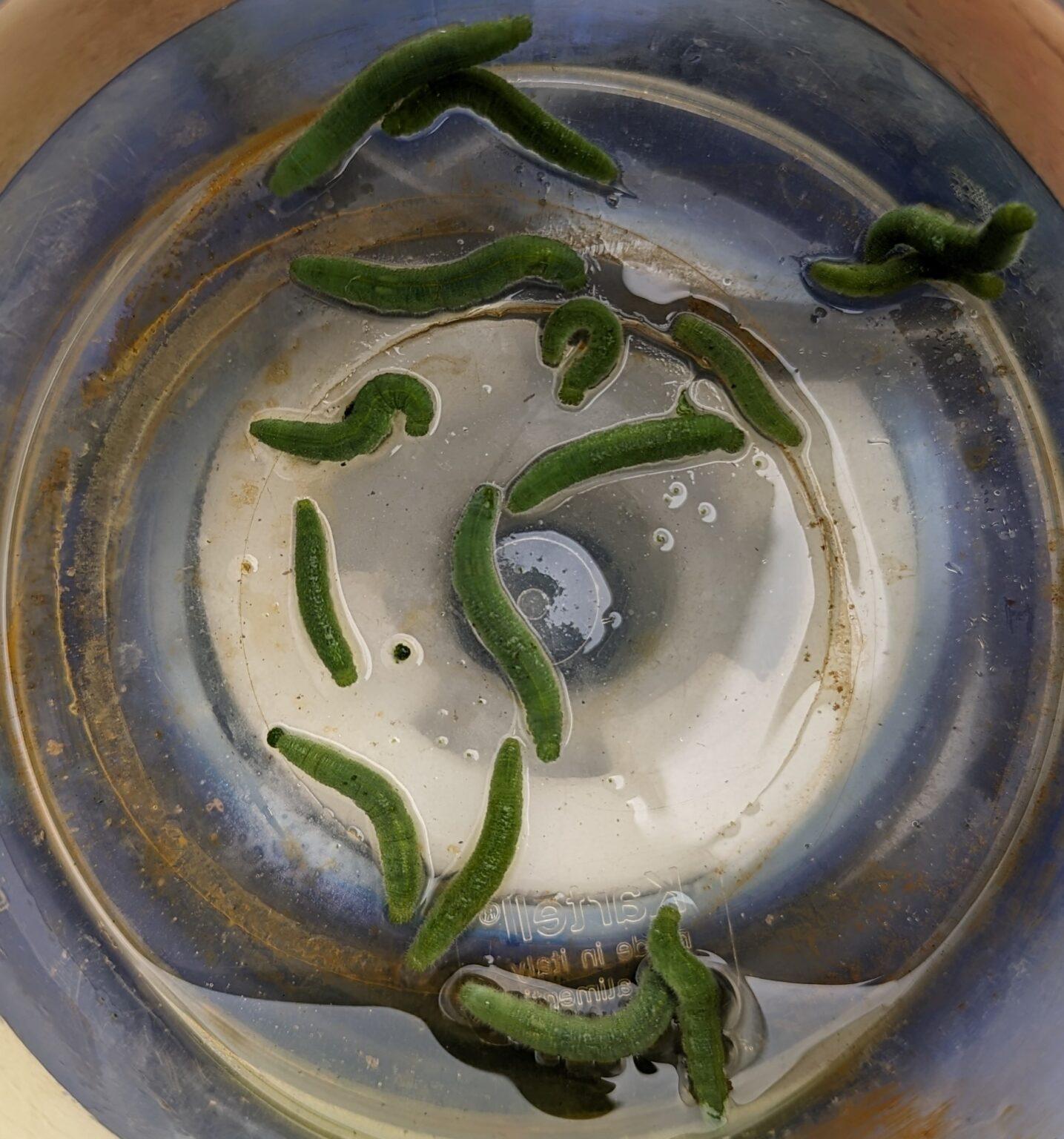Caterpillar Pests of Vines and Trees
Caterpillars are the immature stage of moths and butterflies. Grape berry moth and the light brown apple moth are caterpillar pests of grape and apple, respectively. Grape berry moth is particularly damaging to grapes. The larvae bore into the developing fruit causing crop loss. It is distributed in the US states east of the Rocky Mountains. The light brown apple moth is polyphagous feeding on a wide range of fruit crops, vegetable plants and ornamentals. It is native to Australia, but found in California from Los Angeles to the Napa Valley. Both caterpillar pests are in the family Tortricidae.
Apply Altacor® (35% Chlorantraniliprole) for control. Chlorantraniliprole is a low-toxicity synthetic insecticide with a unique mode of action. It acts on the insects’ ryanodine receptors, upon ingestion, it stops feeding, become paralyzed and subsequently die. Always follow label directions when using a registered pesticide.
Fall Webworm (Hyphantria cunea) emerges in July and August on the east coast. It is native to North America, noted for its characteristic webbing. The adult is a white moth. The larvae feed inside the tents, which enlarge as the caterpillars develop. Considered polyphagous, they feed on a wide range of trees including cherry, black walnut, pecan, American elm, and fruit trees. Though considered a nuisance pest, doing little damage to healthy trees, their nests are unsightly. Eastern tent caterpillar (Malocosoma americanum) occurs early in the growing season, forming its nests in the tree crotch.
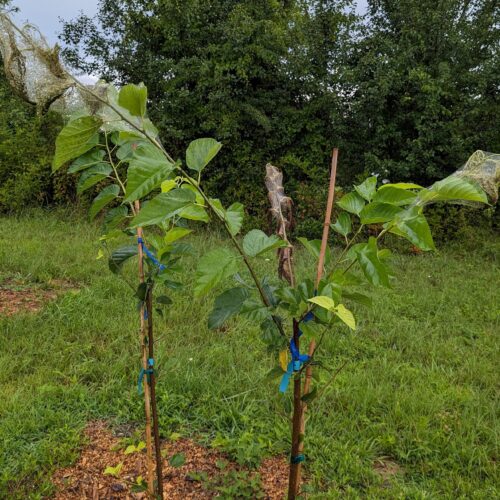

Caterpillar Pests of Garden Plants
Caterpillar Pests of the Cabbage Family
The imported cabbageworm, cabbage looper and diamondback moth love Cole crops. Cole crops belong to the mustard family and include kale, broccoli, cabbage, brussels sprouts, cauliflower and mustard. The larvae are voracious eaters and will reduce your leafy crop to shreds, left untreated. Fortunately, there are a number of control measures you can take. The first is to stagger your planting throughout the growing season. This technique is termed avoidance. Plant seeds every two weeks for a continual harvest. The second strategy is monitoring. Although these caterpillars are small and green (stealthy), they are messy. Look for holes in the leaves and their droppings (frass). Finally, spray with AzaSol (6% azadirachtin), or BT (Bacillus thuringiensis). Always follow label directions when using a registered pesticide.
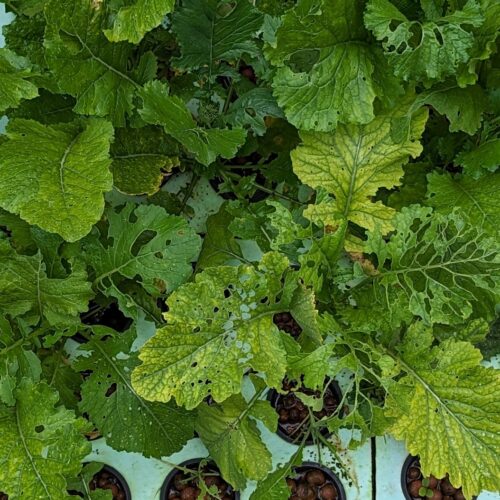
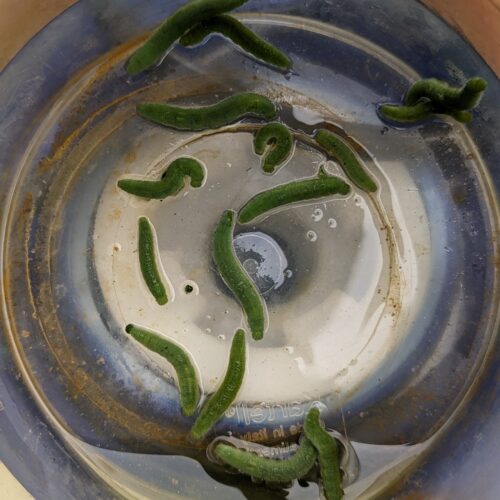
Caterpillar Pests of Tomatoes
Tobacco hornworm (Manduca sexta) was first described by Carolus Linnaeus in 1763. It is also known as Carolina sphinx moth and the tobacco hawk moth as adults. A closely related species is the tomato hornworm. Both feed on plants in the Solanaceae. The larvae, though large are green in color, perfectly camouflaged. You are most likely apt to notice the damage done before you spot the caterpillar. These caterpillars are voracious, stripping the plant from the top down. Pick off the caterpillars, and if you have a fish pond, toss them in and the fish will appreciate the juicy treat! If not, drop them into a container with soapy water as you picked them off your garden plants.
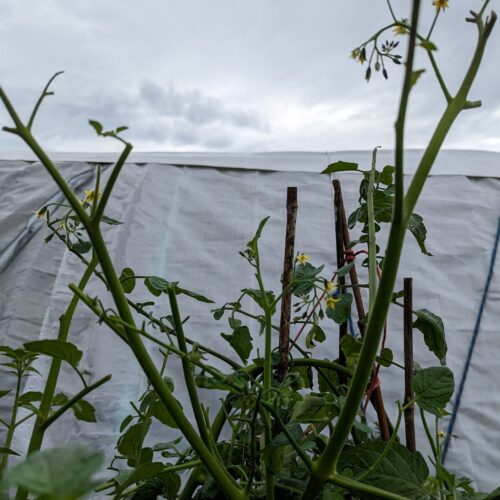
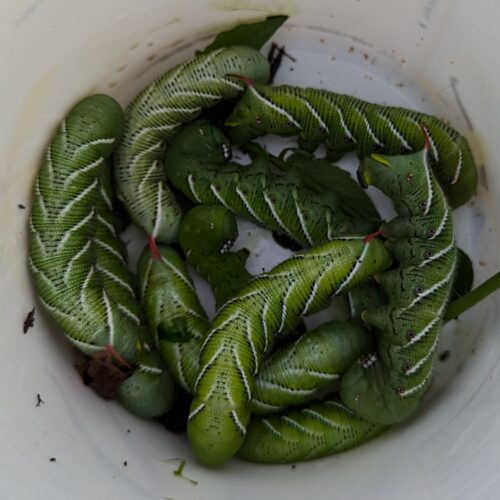
Squash Vine Borer
The adult is a clear-wing moth with orange and black markings. It is sometimes mistaken for a wasp, an example of mimicry. Eggs are laid at the base of the leaf stalk. The developing larvae bore into the stem and with enough feeding damage, will kill the plant. Squash vine borer feeds on squash, zucchini, pumpkin and winter squashes. Cover the plant at various points with earth to allow the plant to root along the stem in order to save the vine. Apply a foliar spray of azadirachtin when the plants are first set out. If sowing plants by seed, make your first application when the first true leaves form. Repeat the application in 7- to 10- day intervals. Always follow label directions when using pesticides.
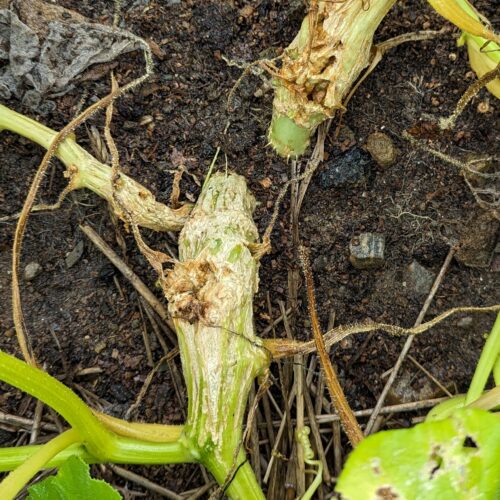
Join us next week when we talk about categorizing cypress trees.
~ Signing off for now, Joe

